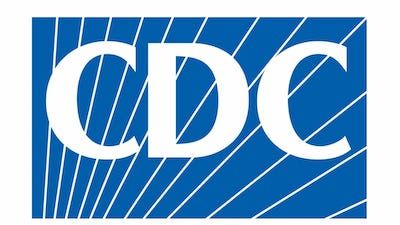
How the CDC is building a future free from HIV

The Centers for Disease Control and Prevention (CDC) is working to fulfill an ambitious government target: to eradicate the HIV epidemic by 2030. By partnering with ICF, the agency has access to the full depth and breadth of our HIV expertise as it responds to highly technical needs. In addition to assisting the CDC with tracking the progress of key strategies, the projects provide vital information that helps people living with the virus—and their service providers—to curb the spread of HIV and achieve viral suppression.
Challenge
Since the 1980s, more than 700,000 Americans have lost their lives to HIV/AIDS. Today, roughly 1.2 million people in the United States live with the virus—with one in seven unaware that they’re infected. Prevention and treatment are failing to reach communities most at risk. As part of the government’s ‘Ending the HIV Epidemic’ (EHE) initiative, the CDC is at the heart of a bold ten-year plan to reach those communities and eradicate the HIV epidemic by 2030, averting an estimated 250,000 infections. To meet the ambitious target of reducing new HIV infections by 75% in five years and at least 90% in ten years, the CDC urgently needed to ramp up its technical and scientific workforce. Tapping into ICF’s pool of world-class subject matter experts means that the CDC can quickly access highly skilled public health professionals to staff nine branches of DHAP.
Solution
Working across numerous DHAP branches, ICF staff provides cost-effective, high-quality scientific and technical support in disease and data management, communications, analysis, training, and project coordination. Together, we drive the initiative, which focuses on 50 ‘hot spots’ that account for more than half of all new annual HIV diagnoses by scaling four key science-based strategies: diagnose, treat, prevent, and respond.
How ICF helps the CDC fulfill the four key strategies:
1. Diagnosing all individuals as early as possible
We accelerate learning and added skills, technical support, and infrastructure to leverage the performance of the HIV prevention workforce with science-based, culturally-attuned interventions, and strategies. As part of the Laboratory Branch (LB), ICF staff also shares data relating to clinical studies, viral transmission, diagnosis, and incidence. We also provide data analysis for the DHAP across all areas of the program and contribute to identifying evidence-based interventions (EBIs) and best practices for at-risk communities.
2. Treating patients quickly and effectively to reach sustained viral suppression
By turning complex, scientific data into easy-to-digest infographics, social media content, one-pagers, and pocket guides, we help the CDC educate at-risk individuals. We further use surveillance data to monitor and characterize the HIV epidemic, its determinants, and guide public health action at federal, state, and local levels. Also, by analyzing data collected via the Medical Monitoring Project (MMP), we help track the behaviors, medical care, and health status of people living with HIV.
3. Preventing new transmissions via proven interventions
The initiatives bid to dramatically reduce HIV transmissions require the identification of both proven and new interventions, which we carry out alongside the Epidemiology Branch (EB) and the Prevention Research Branch (PRB). Research and data surrounding new interventions were published in reviews such as The Compendium of Evidence-Based Interventions and Best Practices for HIV Prevention as well as being made accessible to the public.
4. Responding quickly to HIV outbreaks to get prevention and treatment to those in need
Using molecular surveillance tools in partnership with HIV Incidence and Surveillance Branch (HICSB), ICF helps identify and respond to HIV transmission clusters swiftly. Our team supports the monitoring of behavioral trends in at-risk communities as part of the National HIV Behavioral Surveillance (NHBS) project, which includes sexual behaviors and drug use, HIV testing behaviors, the receipt of prevention services, and the use of prevention strategies.
Results
From data collection to sharing findings via peer-reviewed journals, our expert team helps the CDC access at-risk communities and shape its strategy to reach EHE goals via a wealth of knowledge and tools.
- Workforce: The rapid provision of highly-skilled public health workers specializing in the four key strategy areas vital to the EHE’s success.
- Communication: Working side by side with CDC staff to make public HIV-relevant findings such as the Let’s Stop HIV Together website and the release of digital-first reports: IV Diagnoses of HIV Infection in the United States and Dependent Areas 2018 (Updated) in May 2020, and ‘Estimated HIV Incidence and Prevalence in the United States, 2014-2018’.
- Support: Assisting and monitoring Health Departments (HDs) and Community Based Organizations (CBOs) that receive CDC funding for HIV activities.
Support 9 Division of HIV/AIDS Prevention (DHAP) branches staffed with world-class public health professionals
Publish 65+ communication materials
Author or co-author 85 publications in peer-reviewed journals
Implemented 23 HIV/AIDS prevention funding opportunities in the United States
Supported 74 community engagement activities to support funded grantees
Related work
